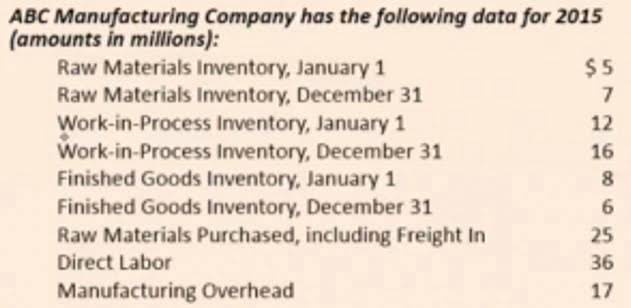
Knowing how these entries affect the income statement is crucial for financial analysis. Think of a T-account as a simple visual tool that helps you see how transactions affect a business’s accounts. With that being said, the five most common types of accounts in financial accounting are assets, liabilities, expenses, revenue, and owner’s equity.
- This helps you understand your revenue stream and make informed decisions about your business.
- In practice, accountants use ledgers for final records, while T-accounts are often used for teaching and troubleshooting errors.
- This ensures our T-accounts maintain balance, reflecting the equal exchange of value that happened in the transaction.
- They’re simply words representing where cash is coming from, and where it’s flowing to, within a business.
- On the other hand, a debit increases an expense account, and a credit decreases it.
- If a company needs to retain data for legal obligations, fraud prevention, or other business purposes, it may deny your request.
How do you record transactions in T accounts?
In this section, I’m going to go through different types of transactions, and I’ll be using T-accounts to display the movement of value through the business. I will use my coffee shop to represent a business throughout these examples. By visually separating different Retail Accounting accounts, T-accounts help businesses and auditors understand financial flows at a glance.
- The following T-account examples provide an outline of the most common T-accounts.
- Well, don’t take our word for it – give the software a try out yourself.
- Every time you contribute money, you debit (increase) the account.
- On the left-side of the vertical line, the debit amounts are shown.
- This deeper grasp empowers accountants to analyze financial data with greater confidence and interpret its implications for the business.
- With the outstanding bill paid, accounts payable account is debited by £700, reducing its value and showing that I no longer owe this amount.
Discover more from Accounting Professor.org

All transactions would just be listed as “bank.” Using the opposite or contra account gives us a much better description of the transaction. The source of this increase to the bank account is capital – the owner investing in the business. Before the days of accounting software, bookkeepers and accountants actually kept physical books, and each ledger was a separate physical book. It’s impossible to provide a complete collection of examples that addresses every financial transaction with the corresponding T account.

What are T accounts? – Comprehensive Guide – Frequently Asked Questions

Any investor with a genuine interest in the business will want to see detailed financial pitch deck slides to gain an understanding of… Manually maintaining T-accounts for every transaction can be impractical for large organisations with thousands of entries. ledger account Every month £2000 is credited from this account, reducing the asset as I make use of the property. Every transaction is recorded in at least two places, reducing the likelihood of missing entries. This inefficiency can impede timely financial reporting and decision-making, hindering the organization’s ability to respond swiftly to market changes or internal developments.
- You won’t find T-accounts in single-entry accounting, where each transaction only hits one account.
- Without a historical perspective, businesses may struggle to identify emerging trends, assess long-term performance, or comply with audit requirements effectively.
- Business owners can easily spot the nature of transactions and track the balance and movements of each account.
- For instance, reconciling accounts receivable with customer invoices ensures reported revenues align with actual sales.
- While automation tackles repetitive tasks like data entry, T accounts become even more valuable as a tool for analysis.
T-accounts show you what to put in the ledger to keep everything balanced. And as you’re issuing sales invoices, making payments, receiving revenue, Deskera automatically debits and credits the transaction values into the corresponding ledger accounts. Wages to employees are a business expense and decrease owner’s equity, so t accounts the Wages Expense account will be debited for $3,200. The asset Cash also decreases and gets a credit entry of $3,200. A T account resembles the letter T and visually represents the debit and credit entries of financial transactions. T-accounts help with understanding how transactions flow, but ledgers are the official books used in accounting reports.
Received Payment for Billed Services

These accounts follow the matching principle, which aligns expenses with related revenue within the same period. For example, when a company pays $2,000 in rent, the rent expense account is debited, and the cash account is credited to reflect the outflow. Monitoring expenses is crucial for managing costs and calculating the operating margin, which measures the proportion of revenue remaining after covering operating expenses. Asset T accounts track resources a company owns that provide future economic benefits, such as cash, accounts receivable, inventory, and property, plant, and equipment (PP&E). For example, when a company purchases equipment for $50,000, the equipment account is debited to reflect the asset increase. Depreciation, calculated using methods like the Modified Accelerated Cost Recovery System (MACRS), reduces the asset’s book value over time.
- A single transaction will have impacts across all reports due to the way debits and credits work.
- In the T- Accounts, the debit side always lies on the left side of the T outline, and the credit side always lies on the right side of the T outline.
- The total difference between the debit and credit columns will be displayed on the bottom of the corresponding side.
- This process begins with journal entries, which include the transaction date, description, and debit and credit amounts.
- They can set up T-accounts for individual stocks or mutual funds, recording the purchase price and subsequent dividends or capital gains.
- T accounts become a powerful tool for developing a strong conceptual understanding of accounting principles.
As a young accountant I had to determine the effect of a new FASB standard on my employer’s financial statements. I reported on the impact on the company’s expenses in great detail. I thought I was done until the controller drew two T-accounts on a piece of paper and noted my comments in the expense T-account, and then asked, “What about the other account? You told me about the expense account, but what other account or accounts are involved?
